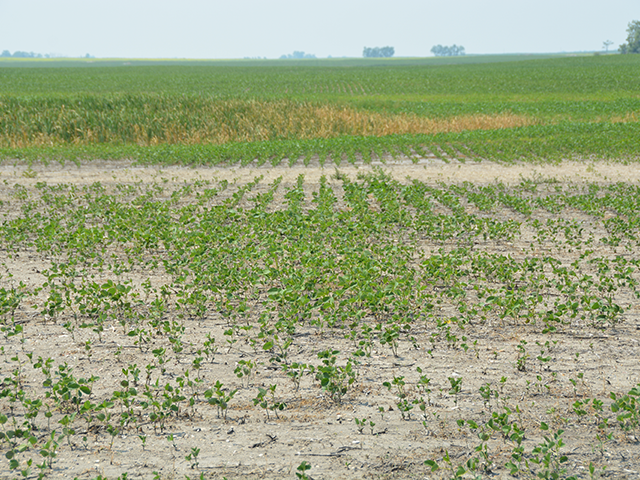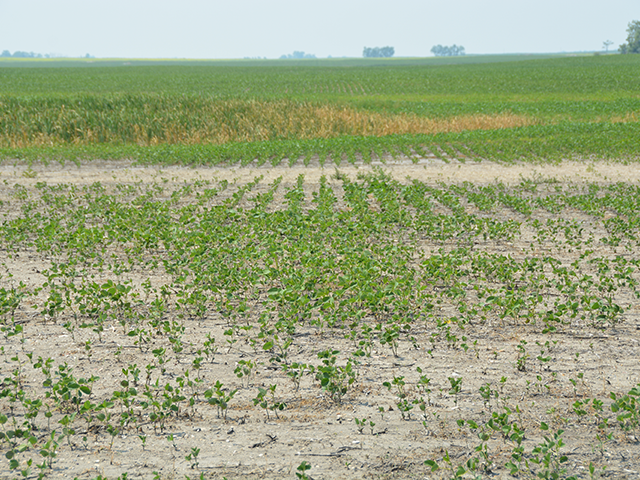Ag Policy Blog
Disputes About Payment Factors for ERP Disaster Aid and Funding Shortage for PARP
OMAHA (DTN) -- Farmers hit by disaster in 2022 are expecting significantly smaller Emergency Relief Program (ERP) payments, setting up a dispute between Congress and USDA over the methodology used to calculate payments.
A letter sent by 66 Republican members of Congress to Agriculture Secretary Tom Vilsack on Monday criticized USDA's payment formula for the 2022 ERP. Lawmakers wrote that producers will see their losses capped dramatically. "The current program does not provide needed assistance to full-time farm families that suffered the deepest losses, and in short, it misallocates limited but badly needed assistance."
USDA counters that Congress gave the department $3.74 billion to deal with a $10 billion or larger problem. USDA officials also point out that out of more than 210,000 applications for ERP 2022, roughly 172,000 farmers will receive more payments than they would have received otherwise.
In November, more than 140 farm groups -- including state and national affiliations -- wrote Vilsack about the factors used to prorate payments to producers and the way crop insurance premiums are factored into the payments. Neither of those formula changes were part of the ERP payments for 2020 or 2021.
The farm groups and lawmakers each criticize the "progressive payment factor," which operates like a payment limit. Farm groups stated the factor, "delivers the least amount of benefit to those who have lost the most outside of the payments limits provided in the statute."
But USDA and farm groups had warned lawmakers earlier this year that the $3.74 billion Congress provided was going to come up short of meeting the need. The American Farm Bureau Federation last March estimated nearly $10.5 billion in losses last year that were not covered by crop insurance.
Robert Bonnie, USDA's undersecretary for Farm Production and Conservation, had warned members of the Senate Agriculture Committee the funding wasn't going to cover the losses.
"The funding provided won't allow us to provide a comparable level of relief for producers reporting losses compared to those impacted in 2020 and 2021," Bonnie told senators in a February hearing.
Farm Service Administrator Zach Ducheneaux, in an interview with DTN, said he hadn't seen the letters of complaint, but he has talked to multiple farm groups about the issues involved as he visits some state conventions.
P[L1] D[0x0] M[300x250] OOP[F] ADUNIT[] T[]
"When we have less resources than the need, that's when we have to try to figure out some policy decisions and determinations, and that's how we landed where we're at now," Ducheneaux said.
A key change is looking at farmers' losses as a function of their income, Ducheneaux said. Of 210,000-plus applications for ERP 2022, more than 82% of producers are going to receive a higher payment than they would have had with a "flat factor." There will be about 18% of farmers who will receive less than they would have otherwise.
"There are 175,000 producers who are pretty happy with what we've done," he said.
"We think this approach is something that has a lot of merit, and we're really proud of the work our team did to put this together," Ducheneaux said. "Again, we're helping 80%-plus of the producers receive a higher benefit."
ERP payments could start going out this month, Ducheneaux said.
PARP PAYMENTS
Another program where payments are going to be squeezed is the Pandemic Assistance Revenue Program (PARP). Funded with $250 million in 2021, the program was meant to help those farmers who did not get support from the multiple Coronavirus Food Assistance Program (CFAP) payments.
The applications for PARP were 10 times the volume expected. Requests topped $2.7 billion.
"It's a similar story. We were anticipating with a few hundred million dollars we could meet substantial demand for the PARP program, and that one rolled in about a factor of 10 times higher than we thought it would be," Ducheneaux said.
PARP, unfortunately, is going to be "very highly factored," and producers could see roughly 10% of their expected losses because there is just no way to divvy up the dollars in a way that would make a larger impact, Ducheneaux said.
USDA has a Dec. 31 deadline to pay out the PARP claims. That means PARP payments will start going out immediately.
USDA ERP portal: https://www.fsa.usda.gov/…
Lawmakers' letter to Ag Secretary Vilsack: https://www.marshall.senate.gov/…
For more, see "USDA Opens Up ERP Applications for $3 Billion to Pay for 2022 Disaster Losses" here: https://www.dtnpf.com/….
Also see "Seven Worries About Farm Safety Net Heading Into Next Farm Bill" here:
Chris Clayton can be reached at Chris.Clayton@dtn.com
Follow him on X, formerly known as Twitter, @ChrisClaytonDTN
(c) Copyright 2023 DTN, LLC. All rights reserved.





Comments
To comment, please Log In or Join our Community .